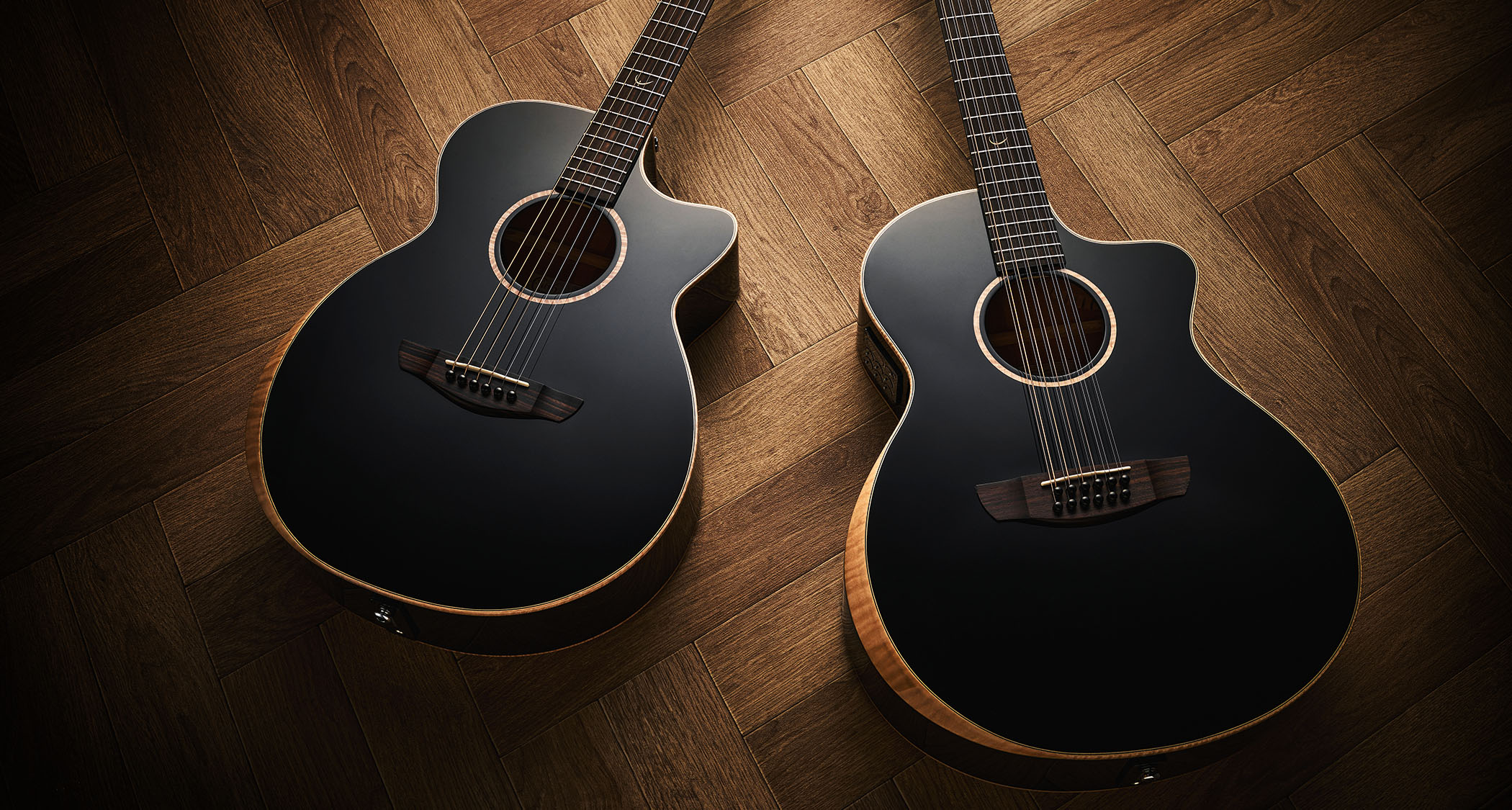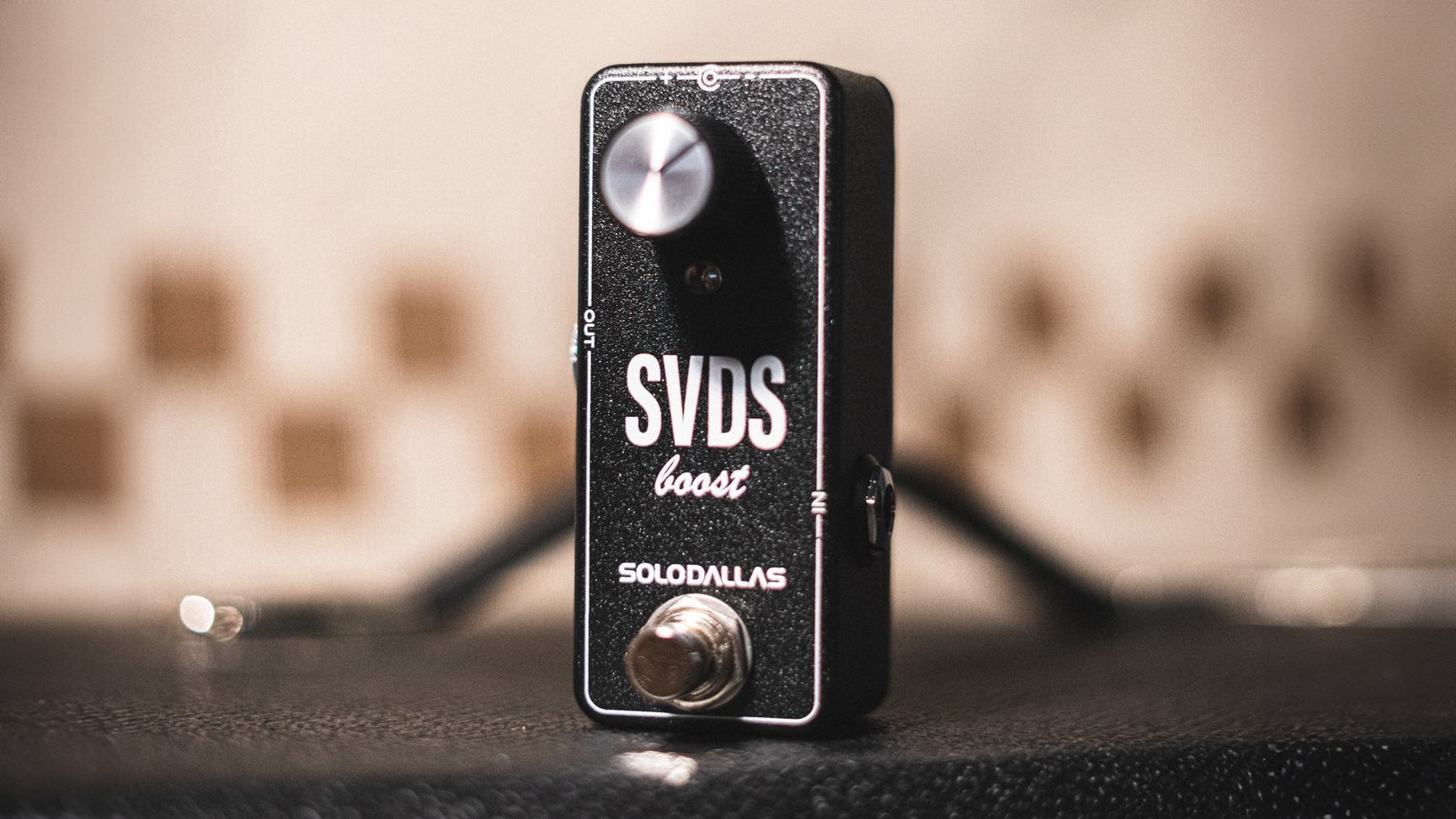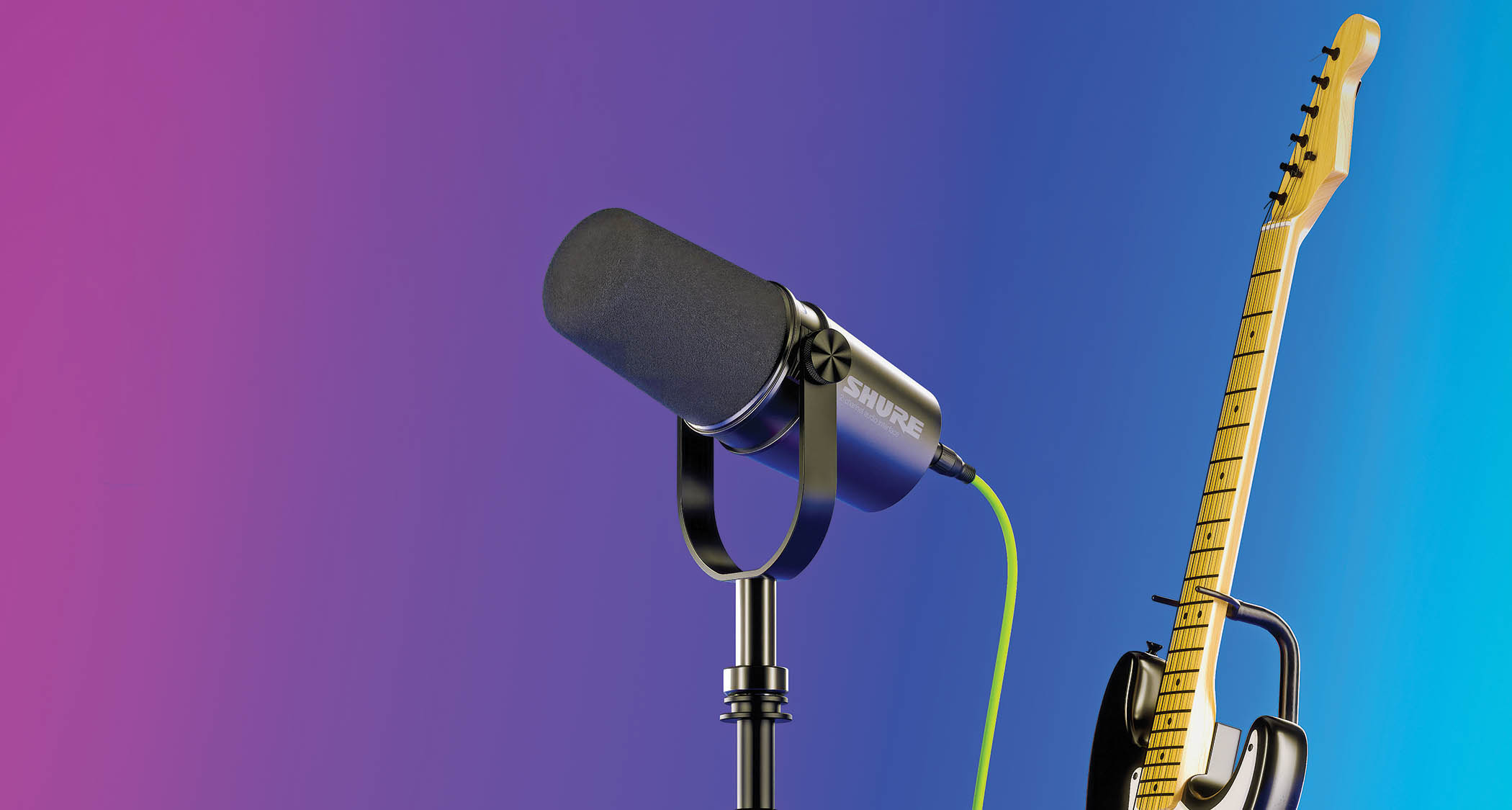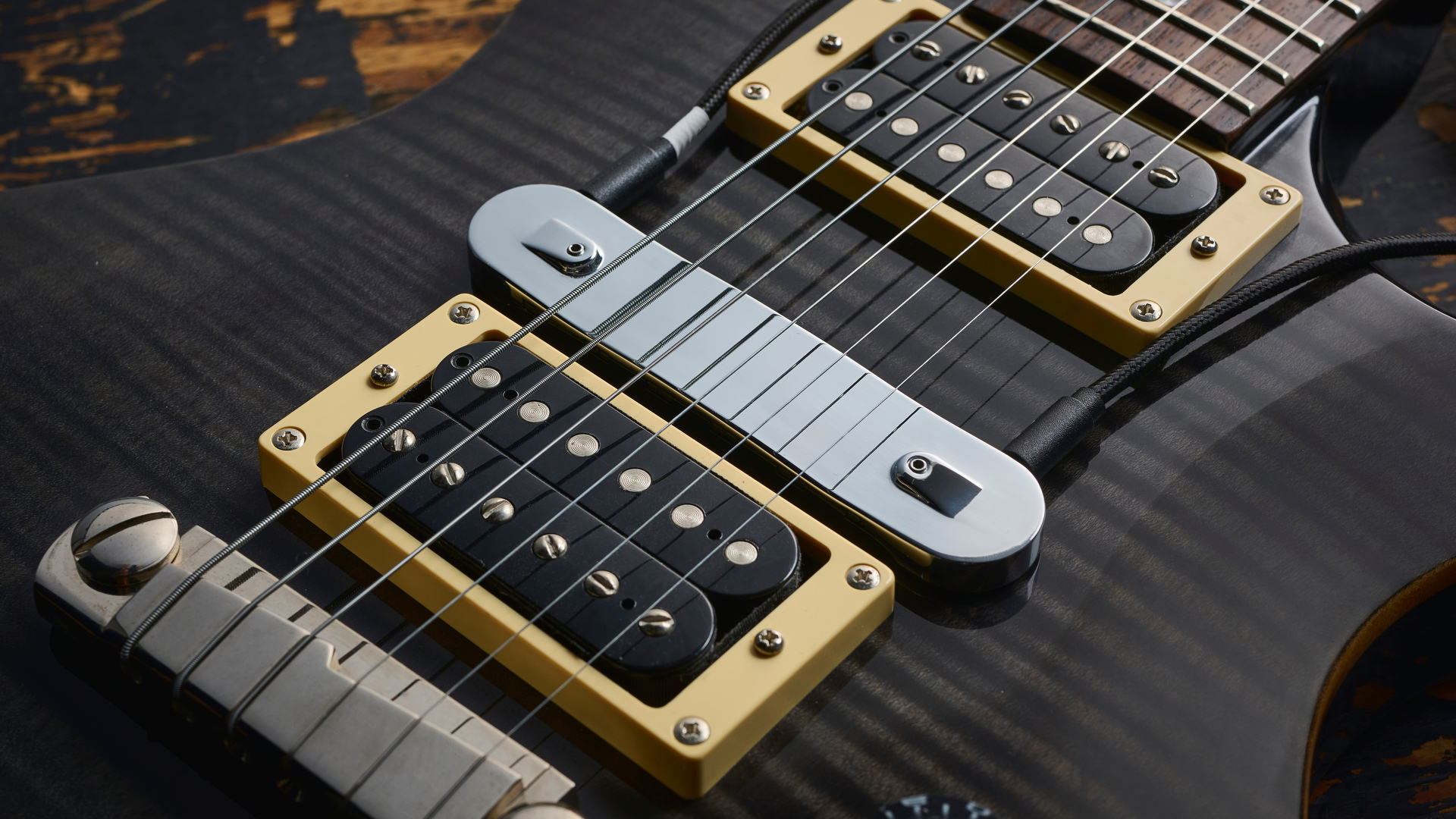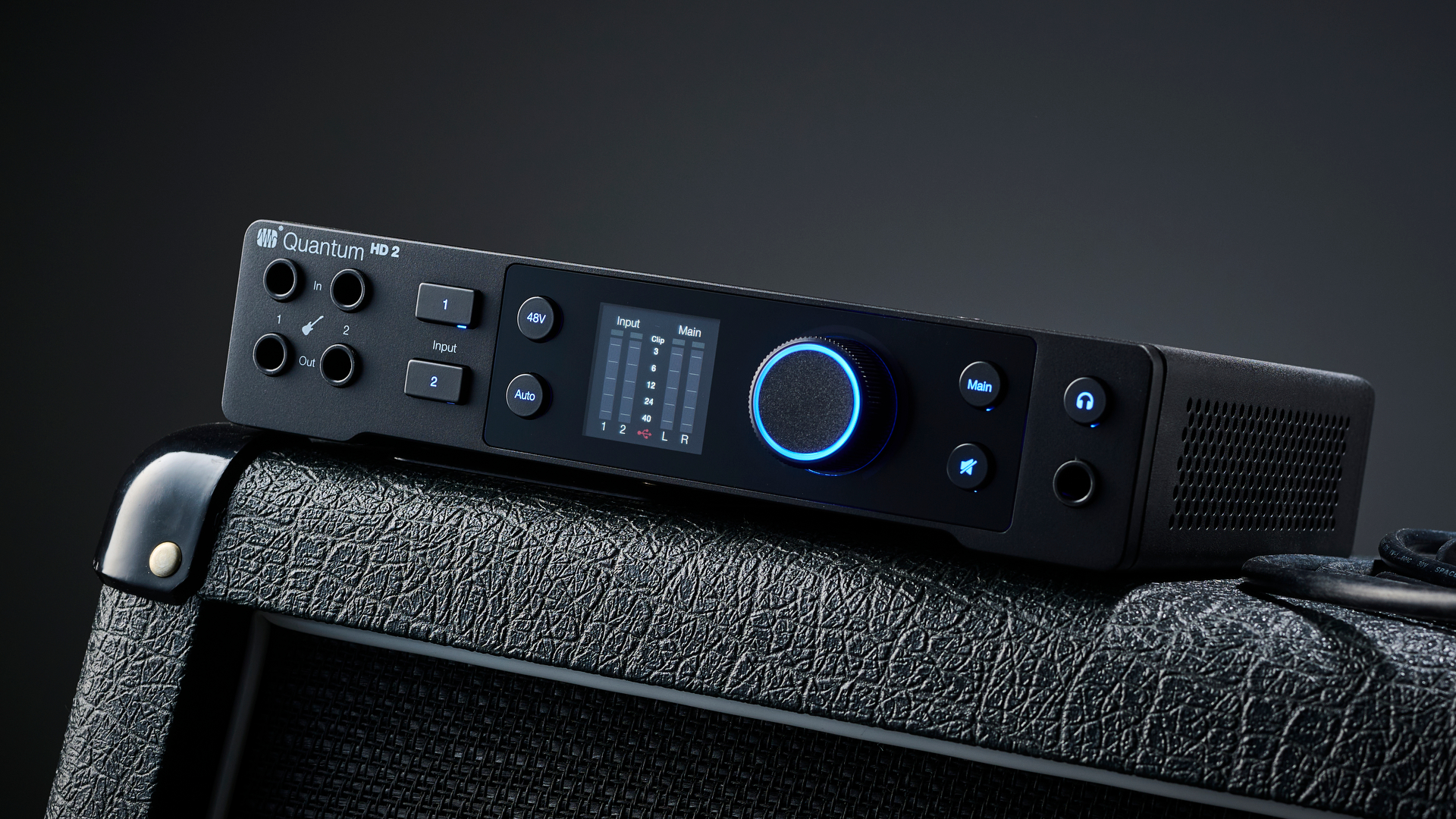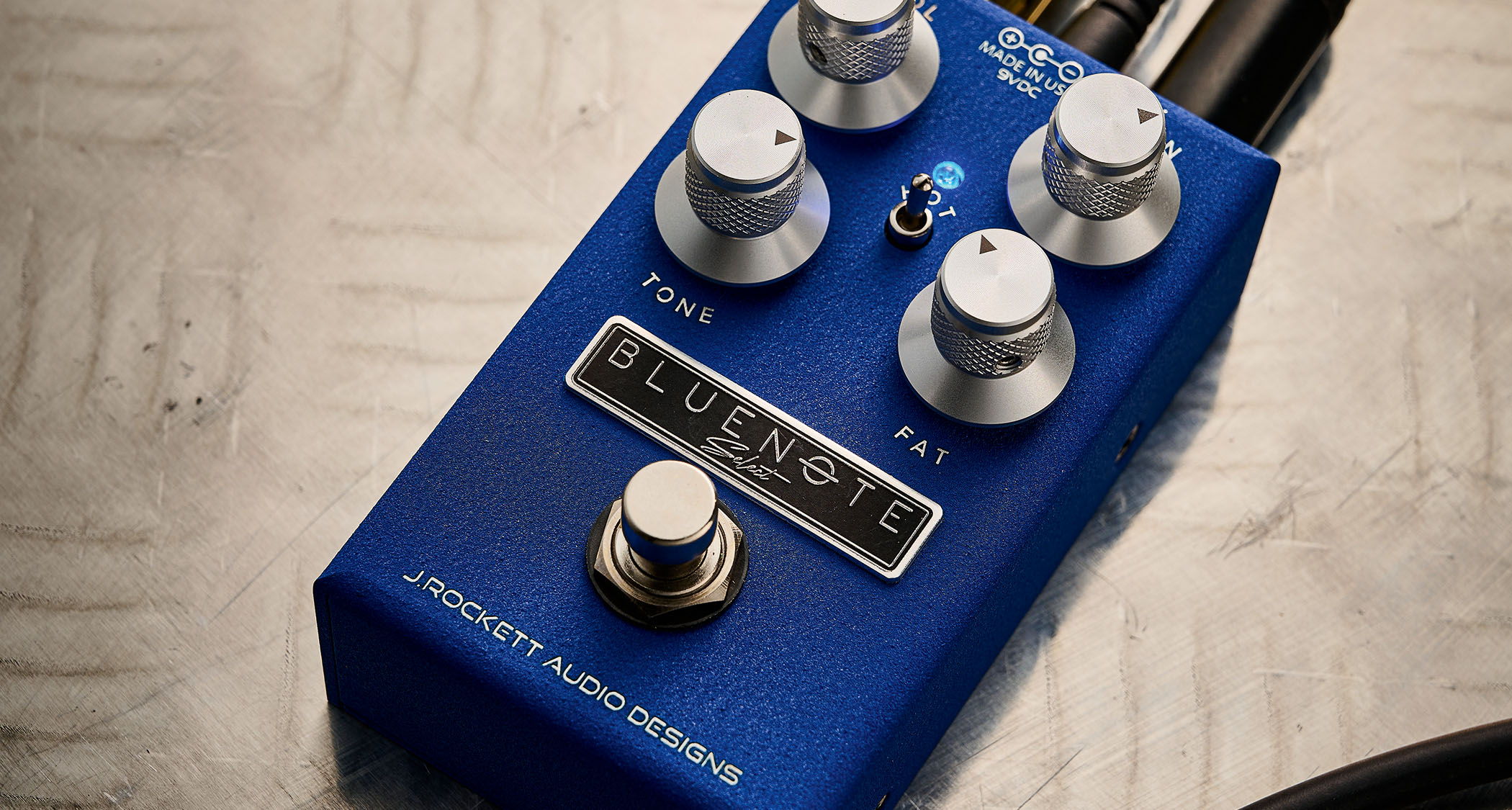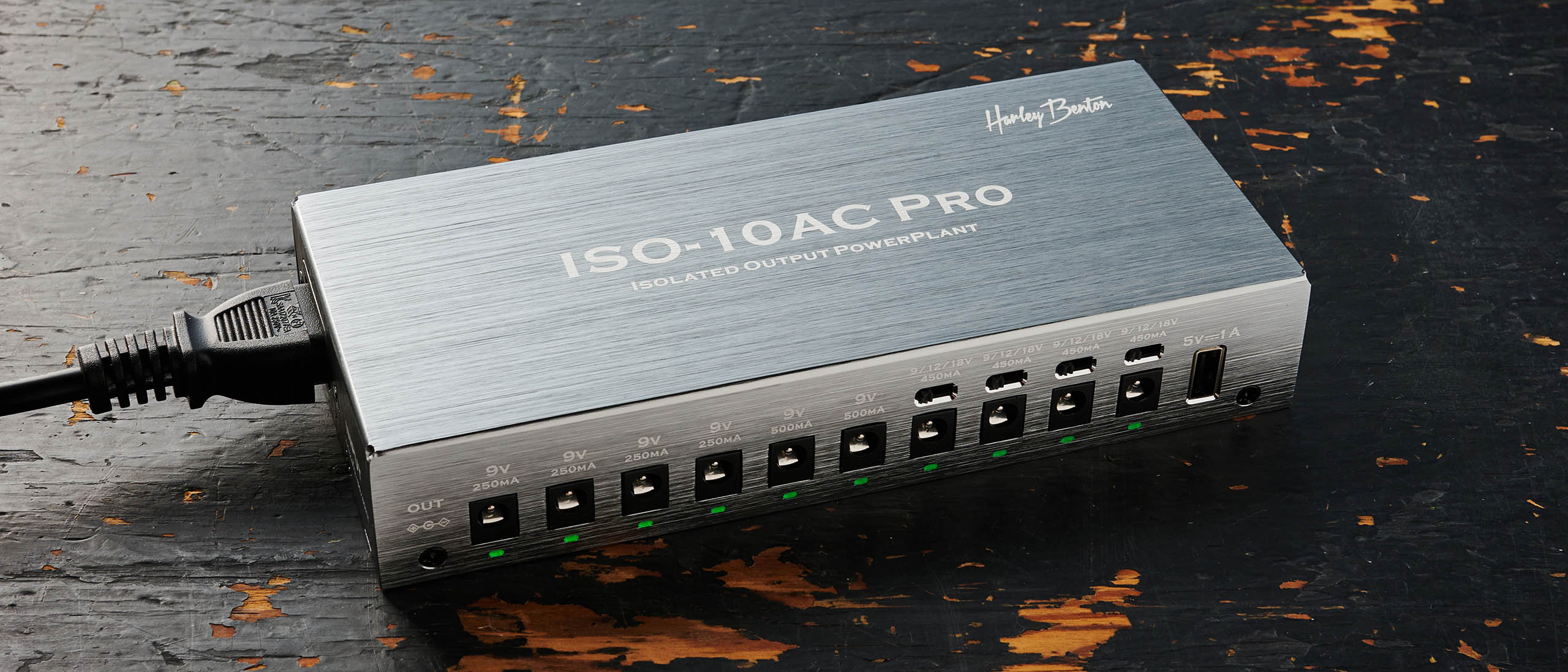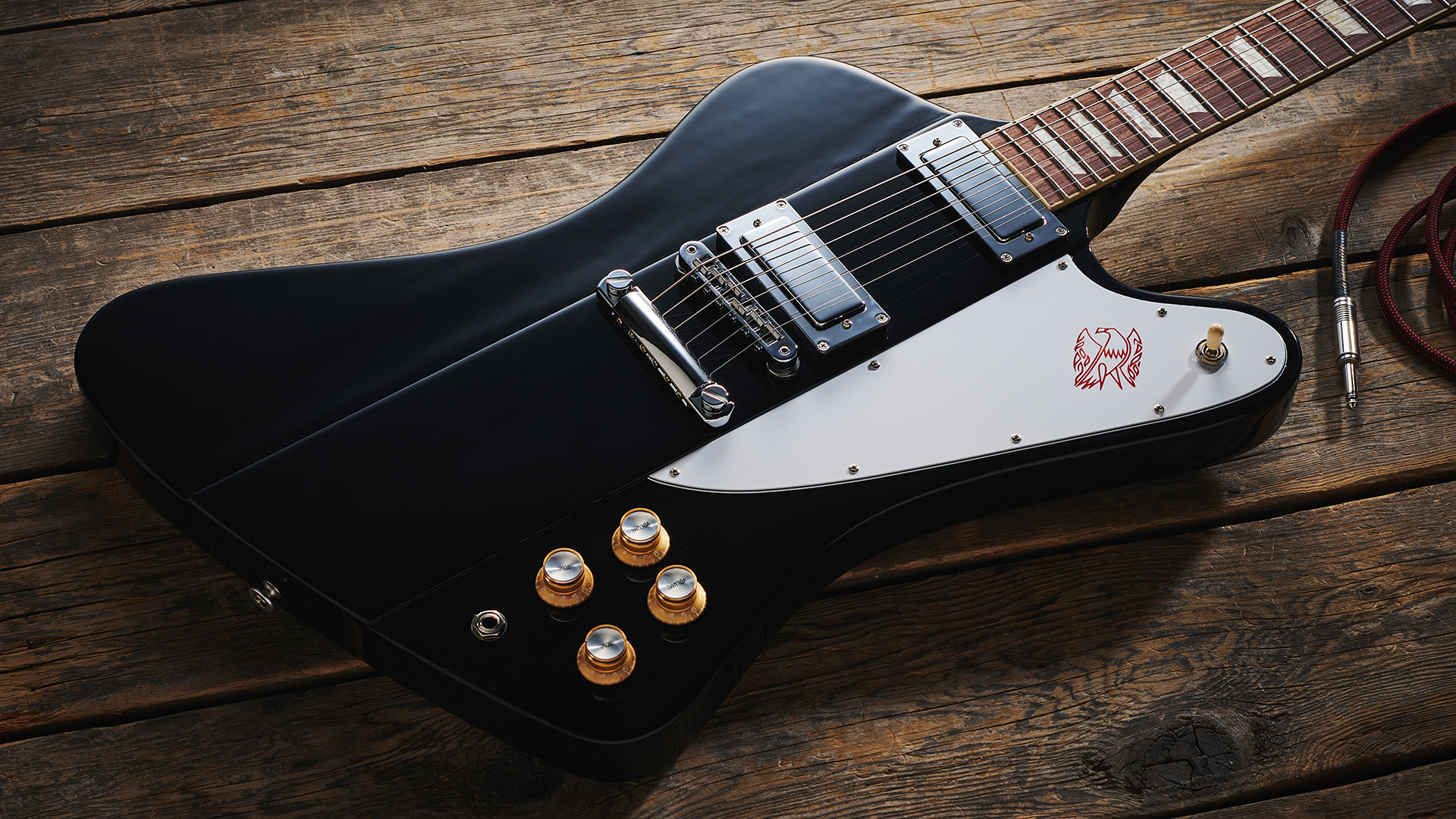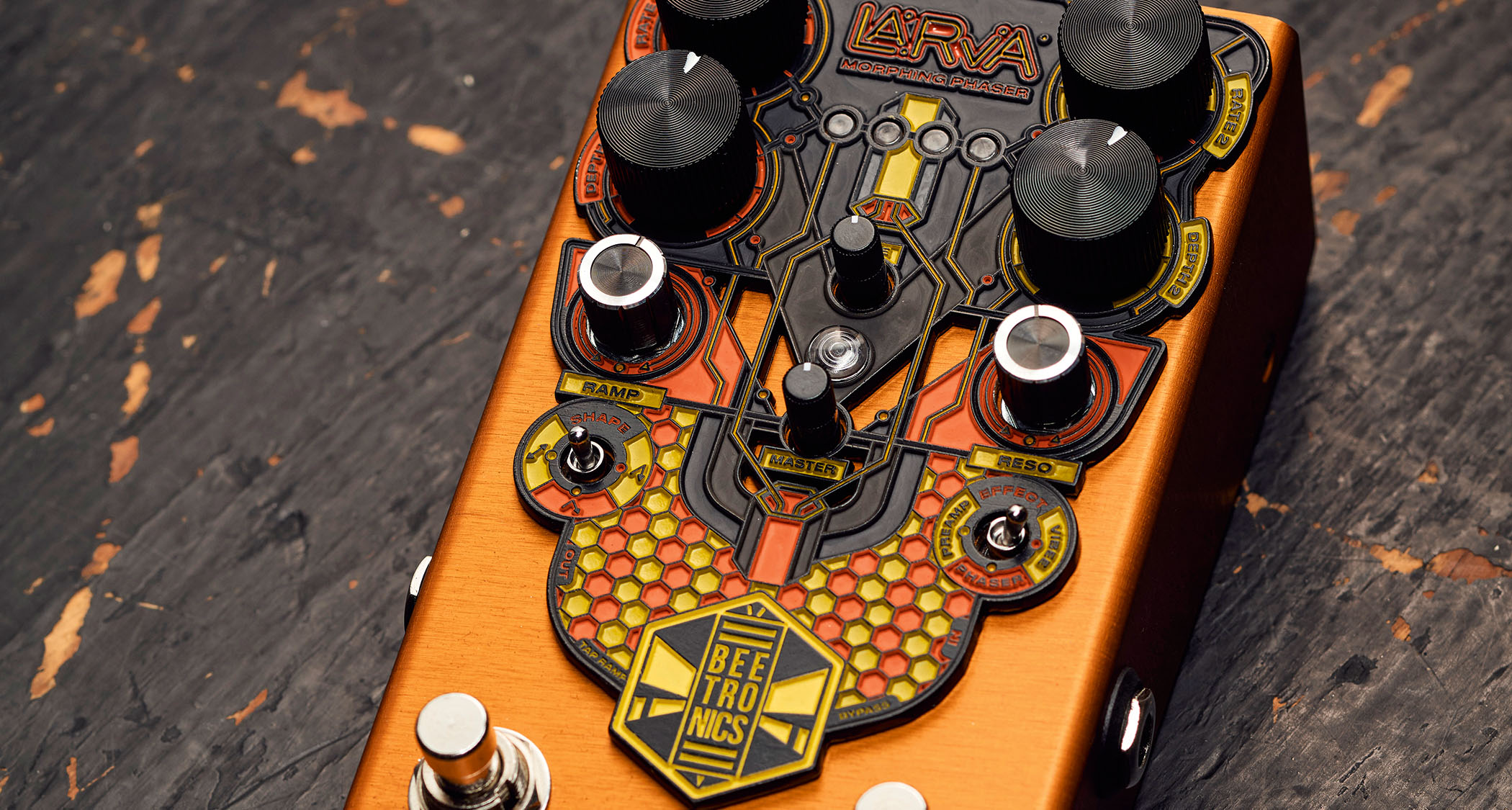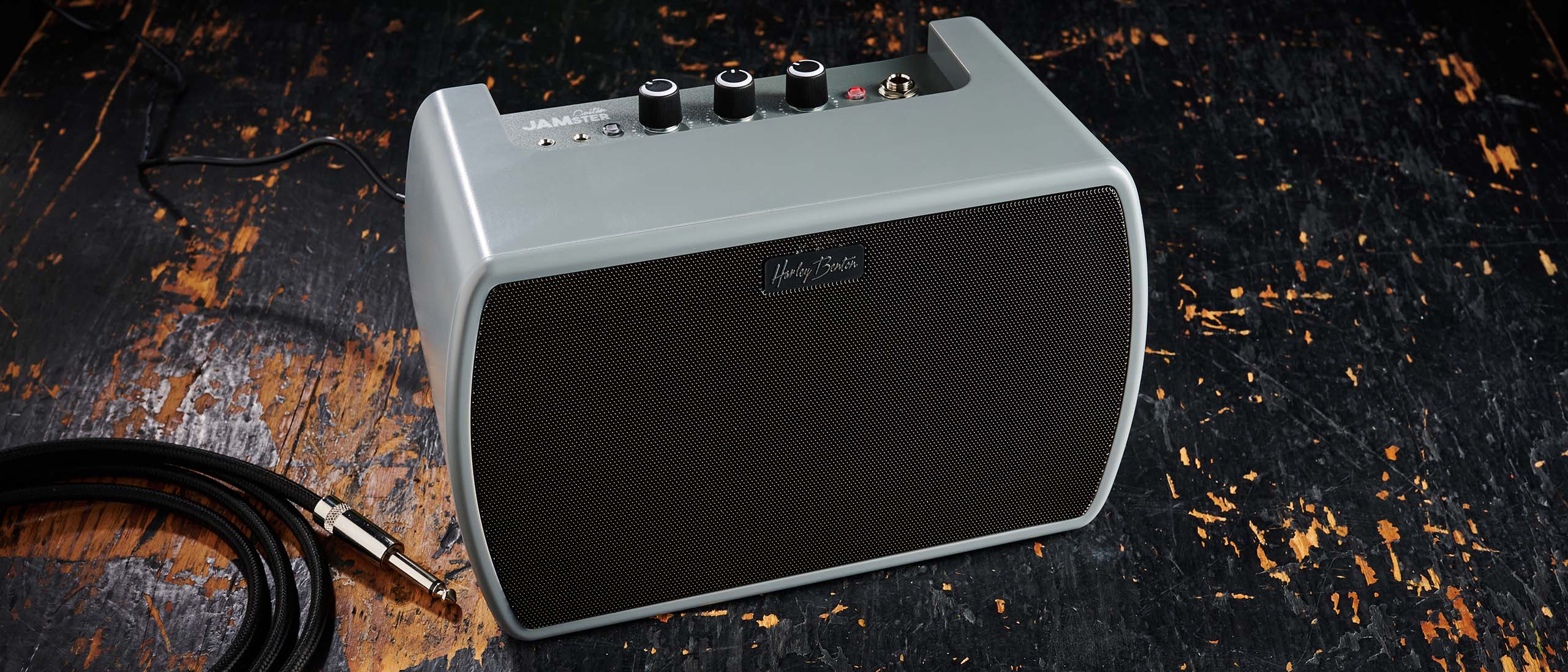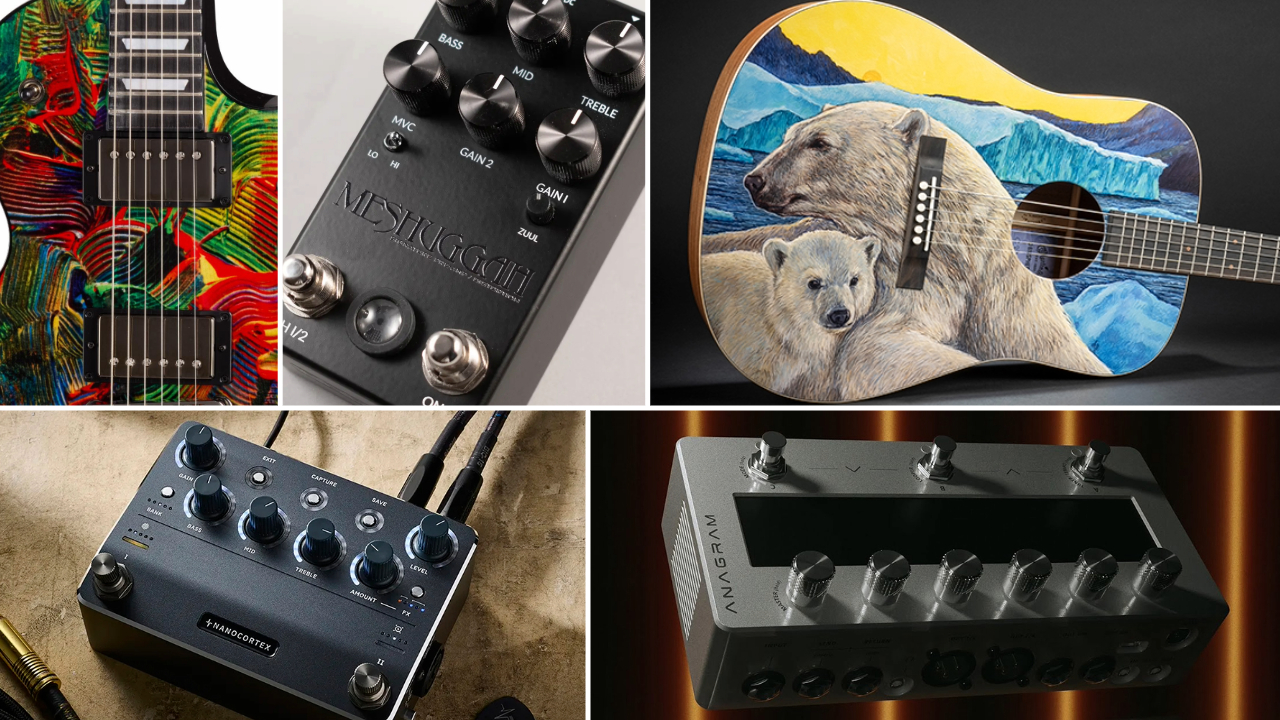Guitar World Verdict
At a time when box-ticking is an essential consideration when laying out around £1.3k for a new guitar, we’d say that both these instruments give a good account of themselves. Build quality, acoustic tone and a good-sounding pickup system that gives a variety of EQ options all feature highly on the wishlist.
Pros
- +
Good price, very able pickup system.
- +
Easy playability.
- +
Ace sound.
- +
Nicely compressed 12-string sound.
- +
Great build.
Cons
- -
Perhaps not everyone is going to enthuse over the black finish.
- -
You have to plug the preamp in before being able to use the onboard tuner.
- -
The small writing on the preamp would be a factor as 12-strings tend to need more tweaking.
You can trust Guitar World
What is it?
These Indonesian-made Faith acoustic guitars are two from a trio of new additions to the company’s Eclipse range; the other is the baby-jumbo six-string equivalent of the Neptune 12-string guitar we see here.
Faith has been wowing the acoustic world for a while now with a host of medium-priced, feature-packed instruments, all of which benefit from the design wizardry of one of the UK’s foremost luthiers, Patrick James Eggle.
In case you’re not aware, after the original electric guitars produced under the Eggle brand in the early 1990s – which included models such as the Berlin, New York and Vienna – Patrick moved on to build his own top-range acoustic guitars before he returned to the premium electric fold. And these guitars represent some of the very best that have passed through our hands in recent years.
Apart from the general good looks of the Faith stable, Patrick also masterminded the less obvious, more discreet but still-important factors of the range such as bracing, neck joints and other structural elements at play under the guitars’ bonnets.
The Eclipse range is so-called as the instruments are dressed in what Faith states as Onyx Black. This shade affords the guitars an air of mystery along with some purposeful good looks.
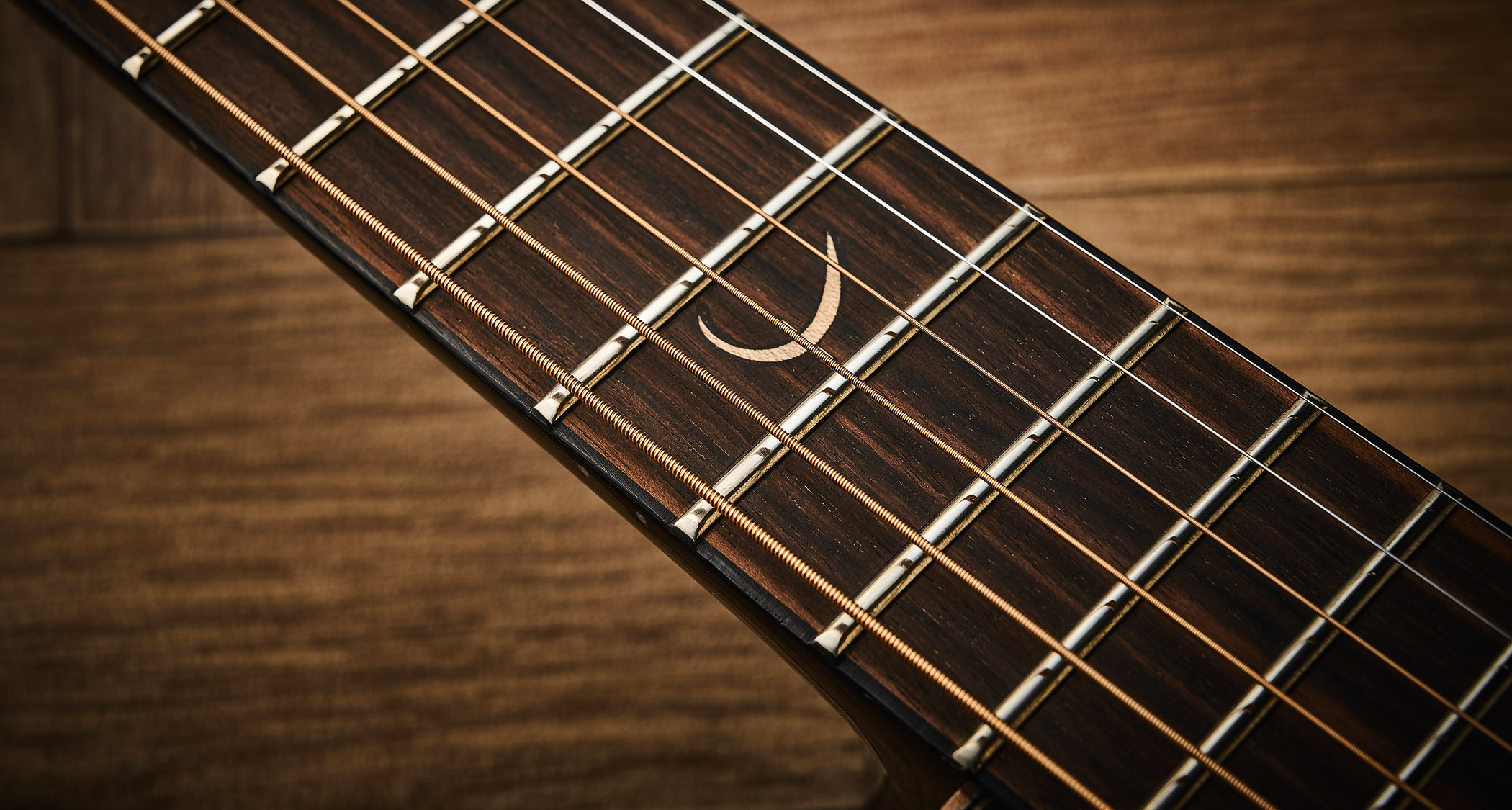
We’re told that the new trio of Eclipse acoustics has been reimagined and upgraded to offer new features, including an upscaled acoustic guitar pickup system and an ecological bent that we’ll talk about in a moment or two.
Neptune
Taking this new Neptune 12-string first and running our eyes down the spec, our first thought is that 12-strings raise a unique set of demands on builders from a construction point of view.
You can rest assured that the spec here reads like a top-end acoustic
That is they have to be strongly built to survive the additional string-pull and with a body that can deal with the somewhat crowded frequencies those dozen strings produce. If the main concern of an acoustic builder is to ensure clarity, separation and premium tone from each string, then those demands are doubled with a 12, after all.
And so we were intrigued by the fact the Neptune’s body size is designated as a ‘baby jumbo’. In fact, with a lower bout measuring 406mm (16 inches), it’s not too much of a baby, but it’s not the usual dreadnought-sized whopper you might expect, either.
If you find yourself thinking that the black finish might hide a multitude of cost-conscious cutbacks, you can rest assured that the spec here reads like a top-end acoustic. The top, for instance, is Engelmann spruce, a timber found on some of the world’s best acoustic guitars, and the back and sides are mahogany – and all are solid woods to boot.
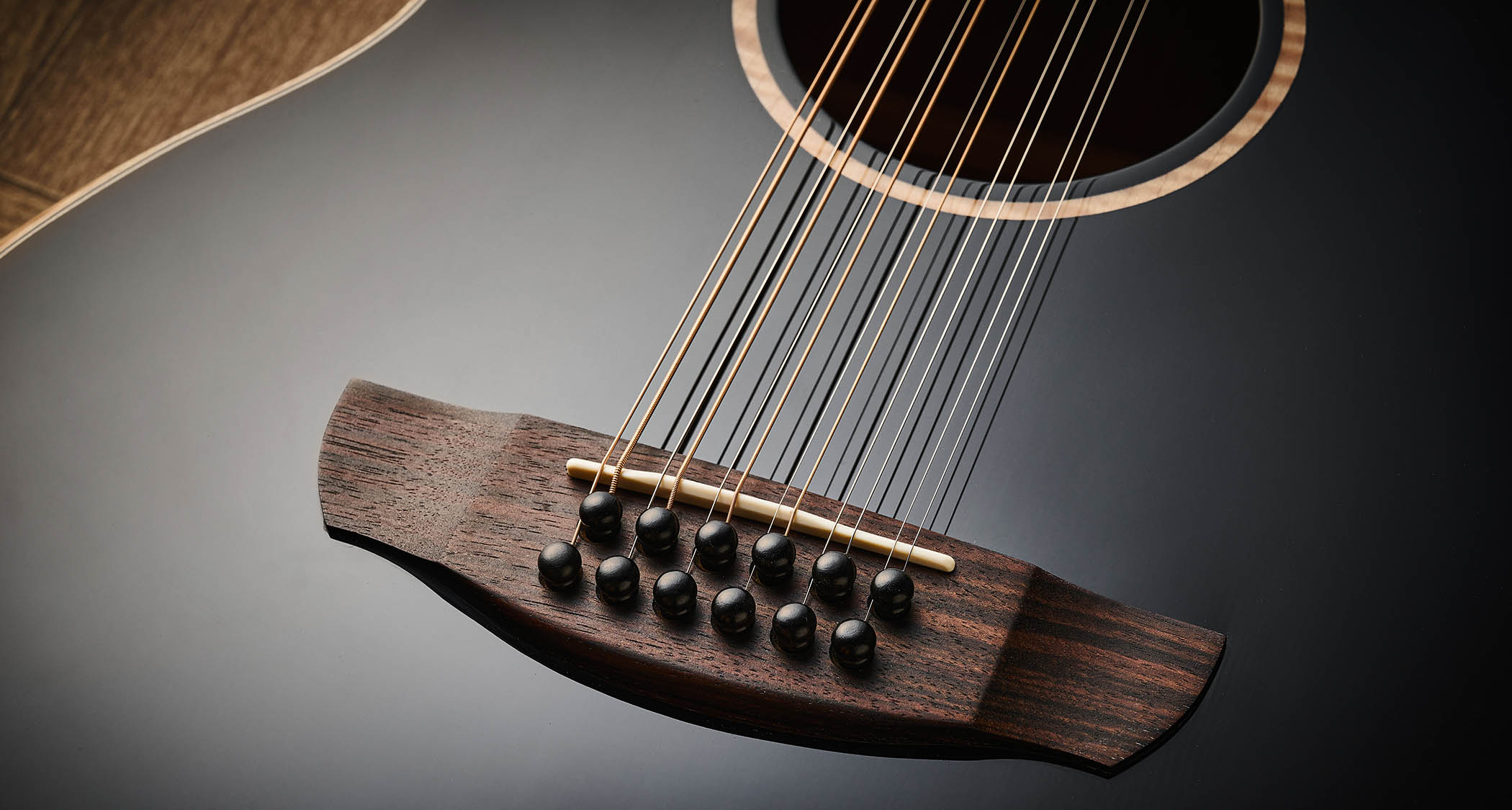
A figured maple armrest bevel – a first for Faith – acts as a contrast to the guitar’s black looks, and figured maple is also used for the binding, top and back on the body, and for the rosette. The same wood appears again on the truss rod cover on the headstock, which is an unusual but very nice touch.
Another upgrade is the use of figured Macassan ebony on the Neptune’s fingerboard and bridge. The figuring here is more noticeable on the latter rather than the former, but it definitely sits in well with the guitar’s all-black livery.
The ecological point we referred to earlier is that Faith says no animal products were used in either of these guitar’s construction – so no bone nuts or even abalone inlays.
But returning to the Neptune 12’s spec, there are 12 Grover Rotomatic tuners with small black buttons atop the elongated headstock. We’ll see if there are any top-heavy issues when we come to the playing test later on.
Venus
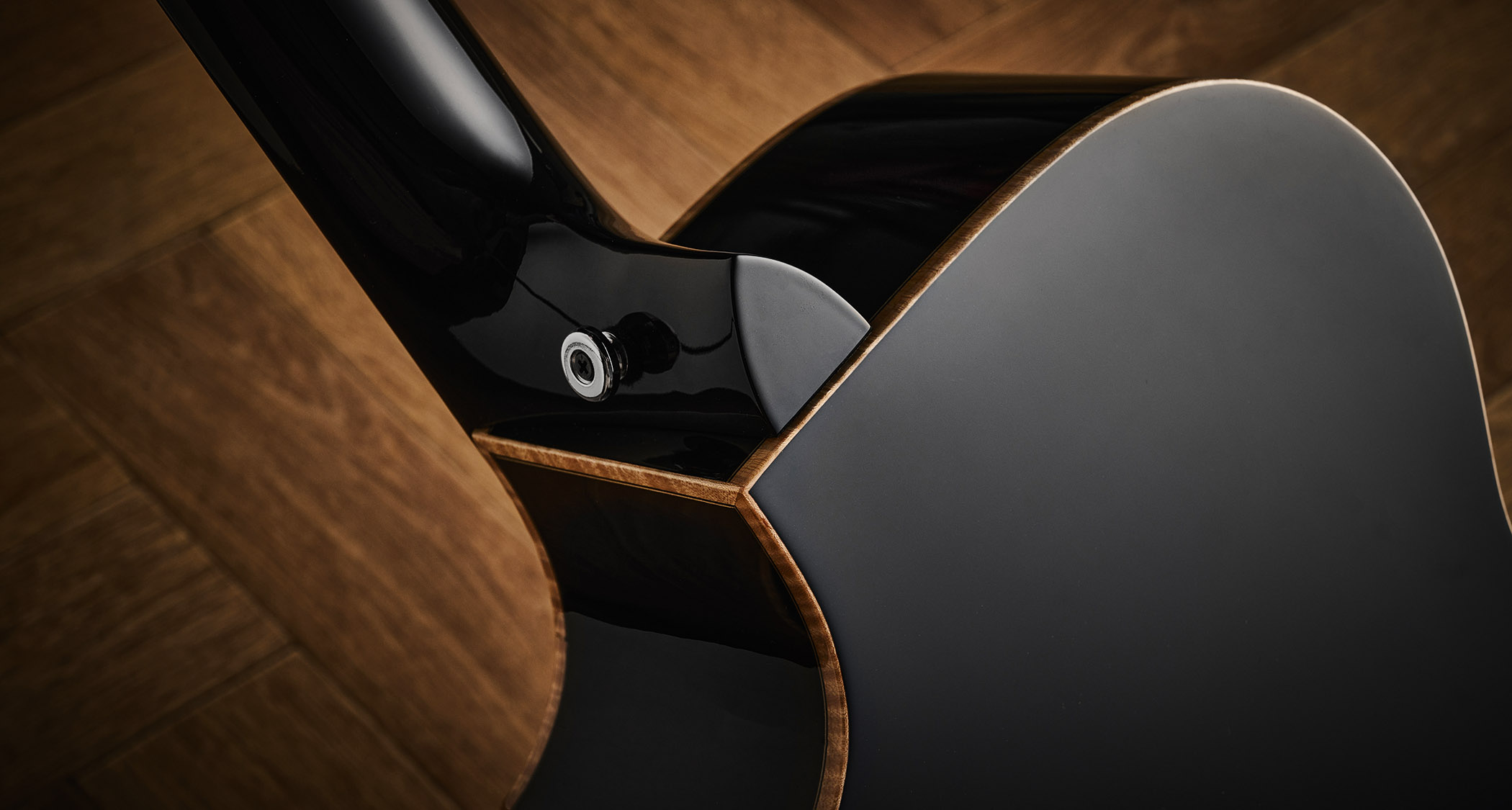
Switching our attention to the Venus six-string, nearly all of the spec is the same as the Neptune. So we have an Engelmann spruce top with mahogany back and sides but with the slightly more trim body dimension of 381mm (15 inches) at the lower bout, as opposed to the 12’s 406mm (16 inches).
Other measurements that differ between the two include the nut width (43mm here; the Neptune’s is naturally wider at 47mm) and the scale length (643mm here and 654mm on the 12). In other words, they’re certainly not twins, but the family resemblance here is obviously very strong.
At first glance, the workmanship on both guitars, inside and out, is well up to the standard we’re used to seeing on guitars hailing from Indonesia these days and, indeed, the quality we’ve seen from Faith in previous encounters.
In line with Faith’s statement of intent about the Eclipse series being “the ultimate stage guitars”, it’s fair to take a close-up look at what the Fishman Ink pickup system has in store for us before we even plug it in.
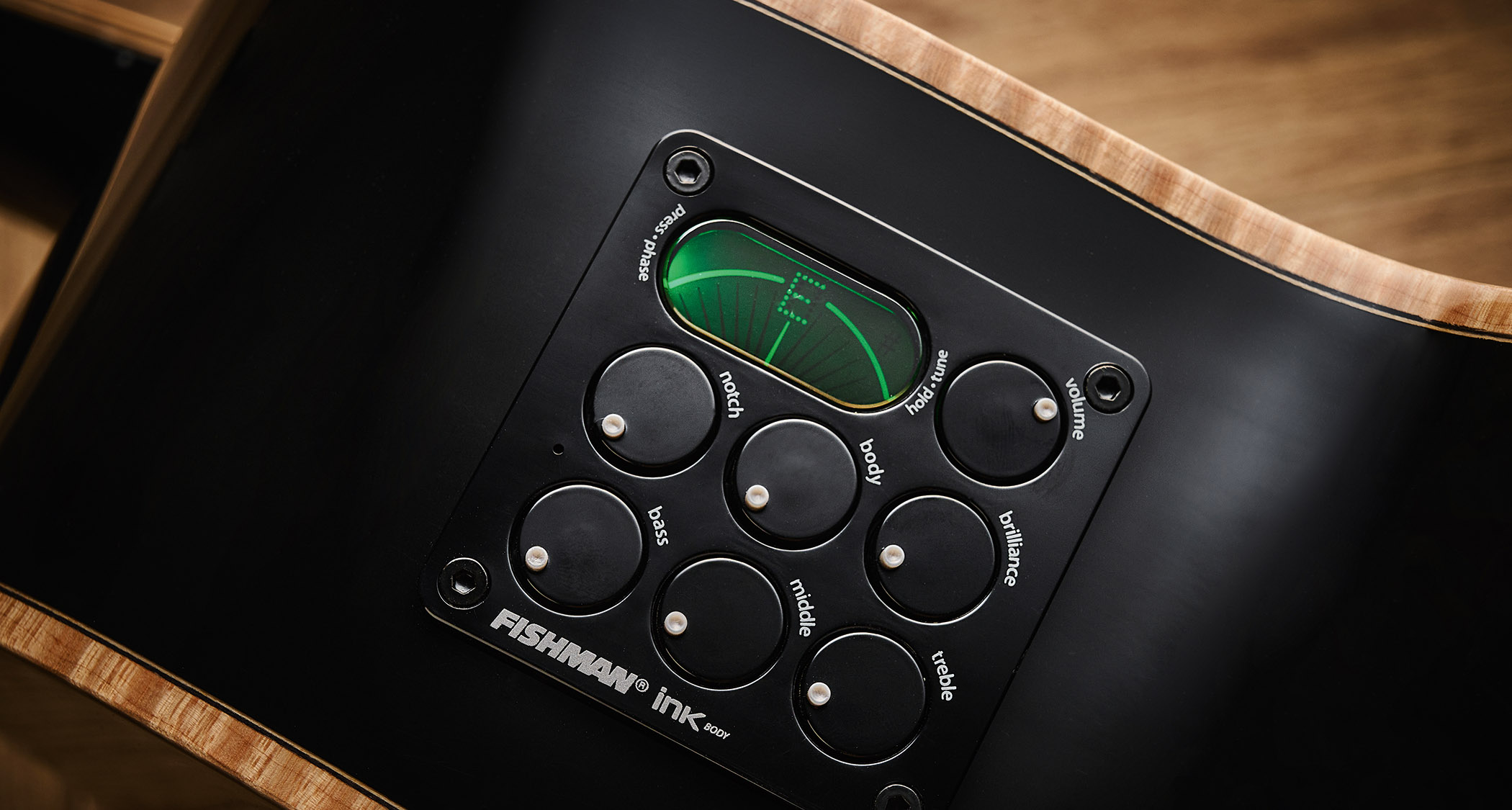
More involved than many upper-bout inlaid control fascias we’ve seen in the past, the Ink preamp section comprises seven discreet rotary controls that are all pretty much flush to the surface of the mounting, except for very small (2mm) raised circles on each to give something for the fingers to latch onto. There’s also a lozenge-shaped section on the top left-hand side that hosts the onboard guitar tuner.
Controls present are: Volume, Brilliance, Treble, Middle and Bass, plus a Body control, which sets the level of the body sensor that lives under the bridge, and another labelled Notch that looks after a notch filter “to remove low-end feedback”.
One thing we noticed straight away (on consulting the Ink’s manual) is that the preamp is only activated when a jack plug is inserted into the socket under the guitar’s rear strap pin. So tuning up while passively strumming on the sofa at home wouldn’t be a straightforward task, but it would certainly come into its own in an on-stage environment.
Specs
Neptune
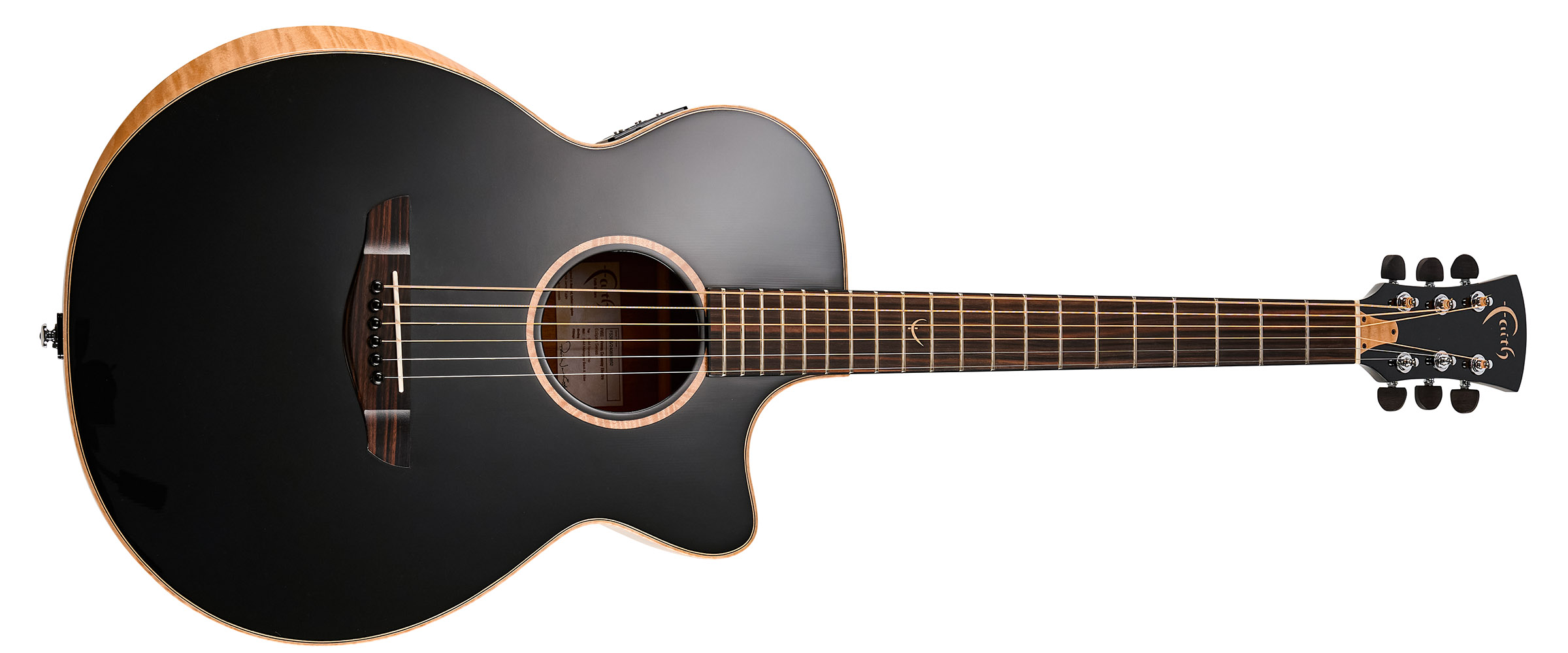
- Price: £1,259 (inc case)
- Origin: Indonesia
- Type: OM/Auditorium cutaway
- Top: Engelmann spruce
- Back/Sides: Mahogany
- Max Rim Depth: 113mm
- Max Body Width: 381mm
- Neck: Mahogany
- Scale Length: 647mm (25.5”)
- Tuners: Grover Rotomatic
- Nut/Width: Tusq/43mm
- Fingerboard: Macassan figured ebony
- Frets: 20
- Bridge/Spacing: Macassan figured ebony w/ Tusq saddle/ 55mm
- Electrics: Fishman Ink Body Preamp. Fishman S-Core pickup and under-bridge body sensor
- Weight (kg/lb): 2.3/5.1
- Options: None
- Range Options: Faith’s new Eclipse range includes 3 models – the 2 we have here, plus the Faith Eclipse Neptune E/Cutaway baby‑jumbo (£1,259)
- Left-Handers: No
- Finish: Gloss Black
Faith Eclipse Neptune E/Cutaway 12-String

- Price: £1,389 (inc case)
- Origin: Indonesia
- Type: Baby jumbo cutaway
- Top: Engelmann spruce
- Back/Sides: Mahogany
- Max Rim Depth: 115mm
- Max Body Width: 406mm
- Neck: Mahogany
- Scale Length: 654mm
- Tuners: Grover Rotomatic
- Nut/Width: Tusq/47mm
- Fingerboard: Macassan figured ebony
- Frets: 20
- Bridge/Spacing: Macassan figured ebony w/ Tusq saddle/ 57mm
- Electrics: Fishman Ink Body Preamp. Fishman S-Core pickup and under-bridge body sensor
- Weight (kg/lb): 2.6/5.7
- Options: None
- Range Options: See Venus
- Left-Handers: No
- Finish: Gloss Black
- Contact: Faith Guitars
Playability and sounds
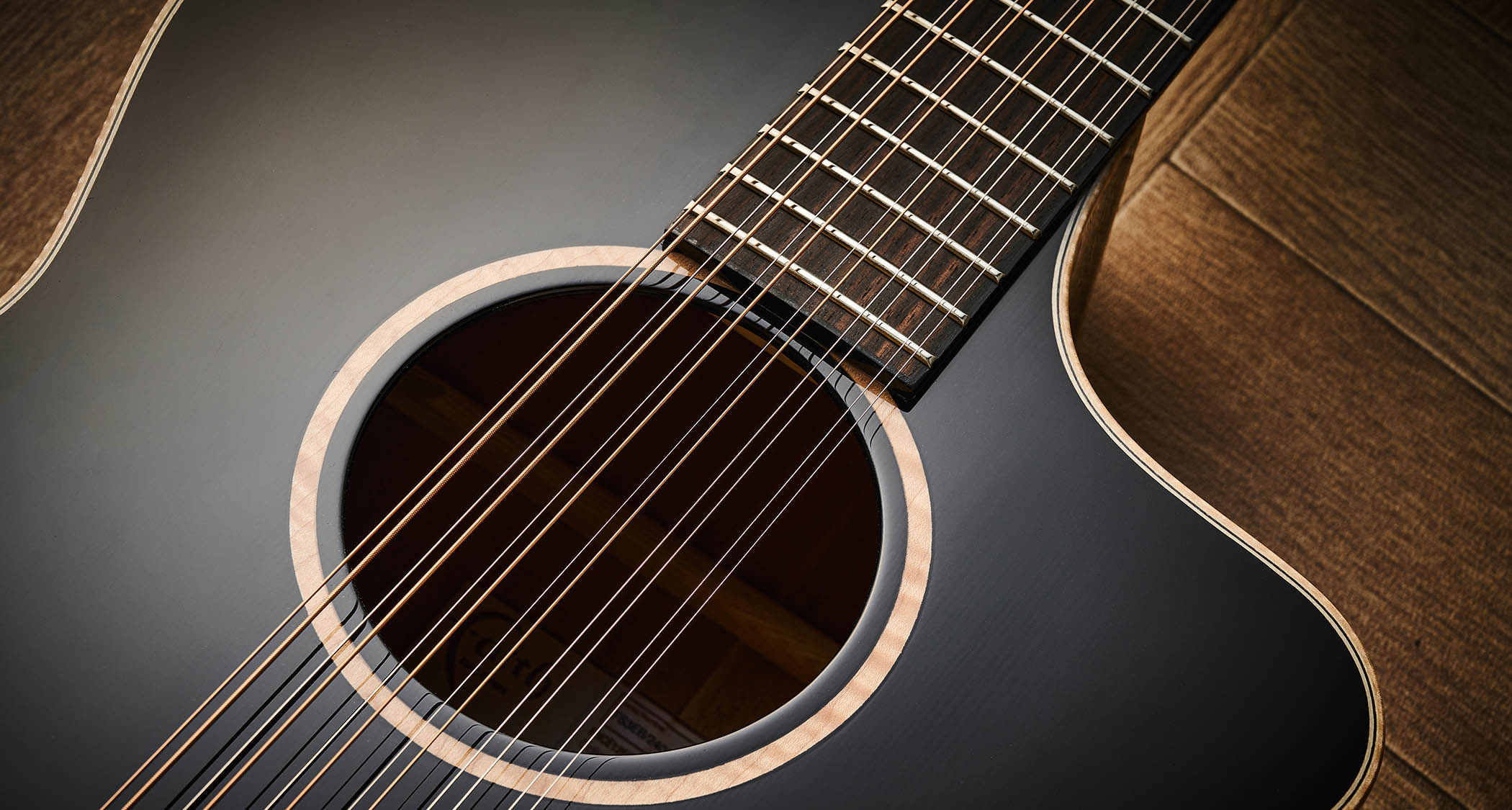
Returning to the Neptune 12, first impressions are that it doesn’t actually feel massive in the hand, which is the tendency of some 12-strings we’ve played in the past. There is some top-heaviness apparent in the form of an inclination to neck dive, but this sort of thing is almost a given with a 12-string and it’s certainly not in the extreme category here, nor does it affect playability while both hands are engaged.
Tuning wasn’t the nightmare that acoustic folklore often relates, and once we were there, the Grover Rotomatics didn’t need any tweaking for the entire time we spent trying to avoid playing Stairway To Heaven.
Every style we played – blues picking, ragtime, folk and so on – were ably accounted for, the spruce/mahogany back-and-sides combo living up to its reputation as a resolute all-rounder
Sound-wise, Neptune’s voice is quite refined. It’s acres away from being big and brash, and it certainly doesn’t lack in any particular frequency range that we could hear. Instead, our strumming efforts were rewarded with thick, lush chords that wouldn’t sound out of place in any rhythm part you could name.
Interestingly, it sounds like the guitar has been voiced for its electric capability, as it has all the built-in acoustic compression necessary to fit straight into a mix with no bother at all.
The similarity between the two guitars extends to the sound and general feel when moving over to the Venus, too. There’s a nice even response all the way up the fretboard with single notes and ambient chords ringing out with harmonious authority.
Every style we played – blues picking, ragtime, folk and so on – were ably accounted for, the spruce/mahogany back-and-sides combo living up to its reputation as a resolute all-rounder.
Inputting the Neptune to our trusty AER Compact 60, we were able to hear the Fishman Ink in action. 12-strings can be awkward in the electric domain with so many frequencies whirling about the place, fighting for their place in the mix. We found that the controls on the Ink were up to the task, though.
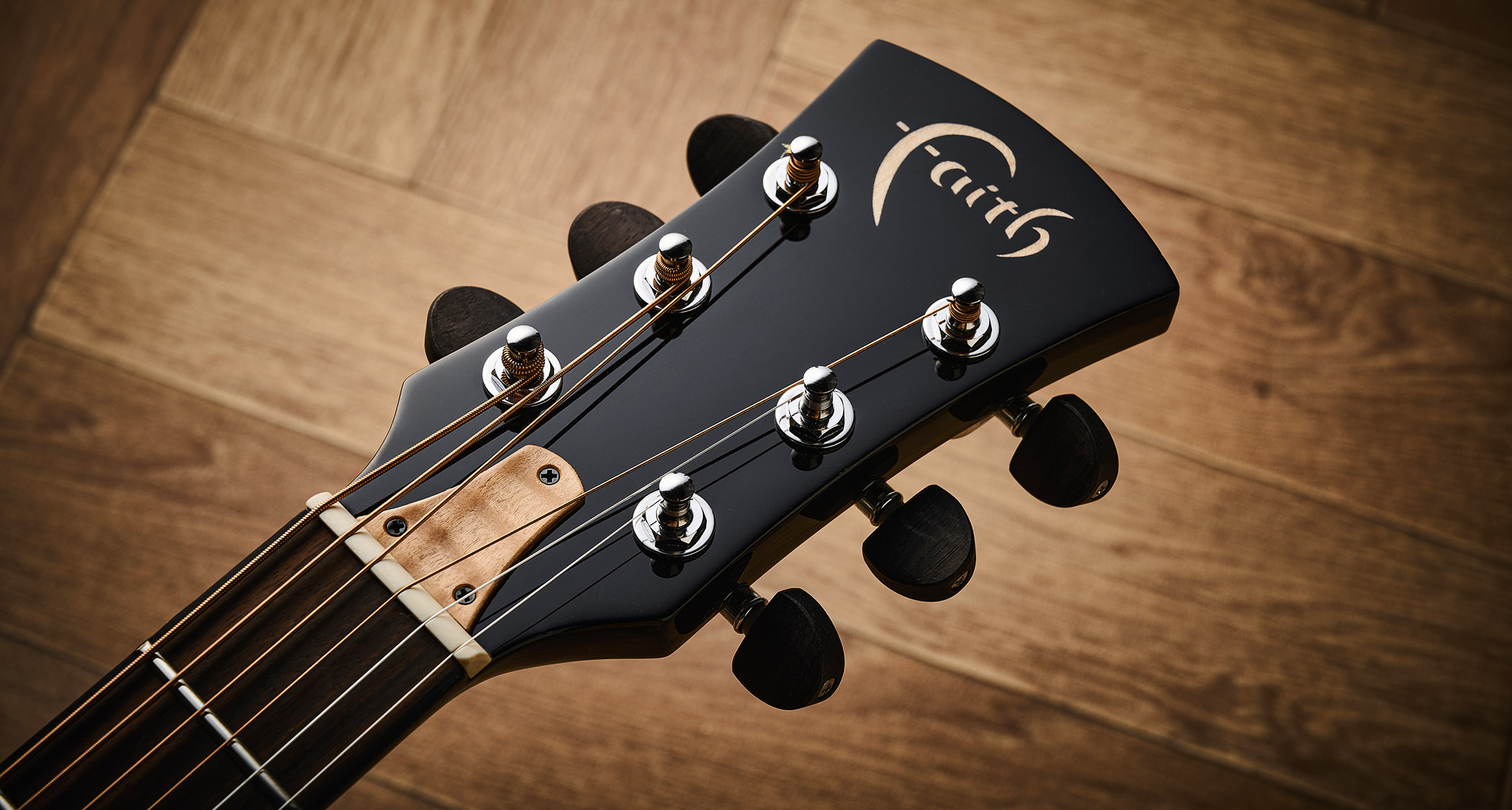
A slight midrange scoop, with both Treble and Brightness controls kept in check and just a smidge of Body, did the trick nicely. The end result was a 12-string wash that brought out the Neptune’s acoustic good nature perfectly.
The Venus gave us a much smoother EQ ride as it literally took seconds before the Ink preamp gave us a well-balanced amplified sound. Our only criticism of the unit would be that the writing identifying the individual fascia controls is very small and would be difficult to read in low light – a typical moody stage lighting setup, for instance. This is a small point and one that familiarity would likely overcome… but it’s a point nonetheless.
Verdict
Verdict: ★★★★☆
Factor in a hard guitar case, armrest bevel and sultry good looks, and you can hardly lose.
The Venus is a good all-round acoustic with an appealing set of sonic credentials that would be a worthy partner in either the living room or on stage
Of course, a 12-string is generally an instrument that comes after your six-string acoustic needs have long been met, but if you have one on your shopping list then the Neptune is well worth a look.
Similarly, the Venus is a good all-round acoustic with an appealing set of sonic credentials that would be a worthy partner in either the living room or on stage. Check them out!
Guitar World verdict: At a time when box-ticking is an essential consideration when laying out around £1.3k for a new guitar, we’d say that both these instruments give a good account of themselves.
Build quality, acoustic tone and a good-sounding pickup system that gives a variety of EQ options all feature highly on the wishlist.
Hands-on videos
Andertons
With over 30 years’ experience writing for guitar magazines, including at one time occupying the role of editor for Guitarist and Guitar Techniques, David is also the best-selling author of a number of guitar books for Sanctuary Publishing, Music Sales, Mel Bay and Hal Leonard. As a player he has performed with blues sax legend Dick Heckstall-Smith, played rock ’n’ roll in Marty Wilde’s band, duetted with Martin Taylor and taken part in charity gigs backing Gary Moore, Bernie Marsden and Robbie McIntosh, among others. An avid composer of acoustic guitar instrumentals, he has released two acclaimed albums, Nocturnal and Arboretum.
You must confirm your public display name before commenting
Please logout and then login again, you will then be prompted to enter your display name.
“Among the most sought-after of all rhythm guitars… a power and projection unsurpassed by any other archtop”: Stromberg has made a long-awaited comeback, and we got our hands on its new Master 400 – a holy grail archtop with a price to match
The heaviest acoustic guitar ever made? Two budding builders craft an acoustic entirely from concrete because they “thought the idea was really funny”
